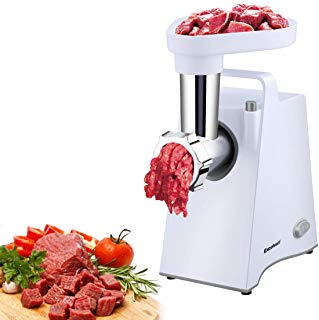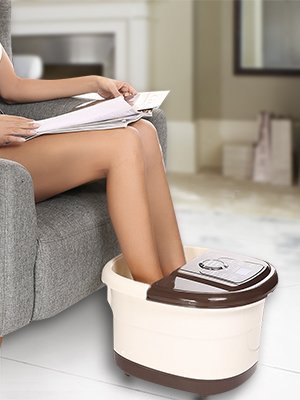
Cotton candy machine purchase guidance: How to choose the right product
How a cotton candy machine works
Most people associate cotton candy with childhood memories of the fair, funfair or other celebrations. With the help of sometimes not so expensive cotton candy machines, lovers of sticky sweets can now prepare them at home at any time. So such a device, which is also known as Candy Maker, quickly becomes the highlight of a children’s birthday party, a family celebration or a cosy movie night at home.
Cotton candy is usually made from conventional household sugar. In order to make airy cotton wool from the granular sugar, it is necessary to first liquefy the sugar.
This task is performed by heating elements, which are usually located in a small container inside the spinning head in the middle of the machine. This is where the user also fills the sugar. While the spinning head is rotating, it heats the container up to 150 degrees Celsius so that the sugar melts.
The rotation of the spinning head of the cotton candy machine now ensures that the centrifugal force throws the liquid sugar into a collecting bowl. This cools the sugar and forms fine threads.
If the user winds these threads onto a bar in a random order, the volume of the sugar increases and airy cotton candy is produced. However, correct winding requires some skill and practice. So if you don’t manage to make cotton candy yourself at the first attempt, like at the fair or fair, you simply have to start a few more attempts and gradually develop the right feeling for the cotton candy machine.
When is it worth having your own cotton candy machine?
- In addition to a machine, consumers need a wooden stick and five grams of sugar to make a portion of cotton candy.
- This makes it possible to produce 200 portions of cotton candy for $4.65 ($4.00 for 200 shashlik skewers, 0.65 euros for one kilogram of sugar).
- At the fair, a portion of cotton candy costs between 2 and 3 dollars.
- Thus the cotton candy machine already pays for itself after 15 portions of cotton candy.
Components of a cotton candy machine
A cotton candy machine consists of certain components that differ in design and material depending on the model. The high quality of the motor housings made of stainless steel and the heating elements made of quartz are particularly important. Those who value such materials will of course have to spend a little more money on their cotton candy machine.
Some components such as the spinning head and the heating elements are included in every cotton candy machine, while others are optional. The latter includes, for example, a practical splash guard, which is usually available on higher quality cotton candy machines.
An overview of the common obligatory and optional components of a Candy Maker can be found in the following bleed.
Body / Motor housing
The body of the machine forms the mechanical part and contains the motor of the cotton candy machine. The spinning head is located on it. Depending on the quality and price of the cotton candy machine, the body is made of stainless steel, metal or plastic.
heating elements
The heating elements heat the container of the cotton candy machine into which the sugar is filled. They are usually located directly under the spinning head and are made of quartz, aluminium or stainless steel.
Spinning head / turntable
The spinning head contains the sugar container and spins the liquid sugar outwards by rotation. This usually consists of stainless steel or metal and is coated with non-adhesive material.
Collecting tray
The plastic collecting tray collects the fluidised sugar, which is then cooled and forms threads. The larger the collecting tray, the easier it is to produce cotton candy and the larger it becomes.
Splash guard
An optional splash guard consists of acrylic glass or plastic. This protects the user and the environment from hot sugar splashes from the cotton candy machine.
Anti-slip feet
So-called anti-slip feet ensure a secure and stable hold of the cotton candy machine during operation. These rubber or silicone nubs adhere firmly to the surface and ensure a good stand.
Which ingredients are allowed in the cotton candy machine?
Commercially available household sugar is usually used for the production of cotton candy. Anyone who wishes to have special cotton candy in colour and flavour can add food colouring and flavours to the sugar. Certain cotton candy machines are even able to melt hard candies and conjure up tasty cotton candy with a little sugar. The following overview provides an overview of all the ingredients that consumers can use to make cotton candy.
HOUSEHOLD SUGAR
Household sugar is the basic ingredient of cotton candy. The quantity should be measured precisely. For a normal portion 5 grams of sugar are enough.
FOOD COLOURS
Food colours give the cotton candy its colour. Special care should be taken not to add too much to the sugar, otherwise the mass will become too liquid.
AROMAS
The flavour of the cotton candy can be changed by adding flavours. As with food colouring, special attention should be paid to dosage.
HARD CANDIES
Hard candies replace food colouring and flavours. They give the cotton wool both colour and flavour. However, only certain machines can melt hard sweets, while the rest require the consumer to finely crush them with a food processor before adding them.
Consumers who are reluctant to experiment but still want to make colored cotton candy with flavor can use colorful, flavored special sugars. Although this is usually comparatively expensive, it saves the user mixing and possibly too liquid a sugar mass.
The following utensils should never be placed in a Candy Maker:
- Brown cane sugar – has a different melting temperature than household sugar and is therefore not suitable for making cotton candy.
- Oil – is not necessary and makes cleaning the cotton candy machine more difficult.
Which accessories do you need?
In addition to the cotton candy machine and the ingredients, consumers also need other accessories to produce the airy candy.
Dosage spoon for measuring the sugar quantity
A dosing spoon is very practical, with which the user can conveniently measure the right amount of sugar for the cotton candy machine. One portion of cotton candy is usually enough for about five grams of household sugar. However, the exact amount varies depending on the machine used.
If the manufacturer includes a suitable dosing unit with his machine, he not only saves the user from having to weigh the sugar, estimate the amount or buy a dosing spoon, but can also adapt the included accessories precisely to the requirements of the special machine. The sugar wadding machines in our comparison are for the most part supplied with dosers.
Rod for rolling up the cotton candy
While a dosage spoon is a practical utensil, but not absolutely necessary, no cotton candy can be made without sticks for winding. For this reason, a certain number of wooden or alternatively plastic sticks are included in the scope of delivery of many manufacturers. So the consumer has also the possibility of starting directly with the production of his own candyfloss after the purchase of his equipment, without having to procure before still chopsticks. Usually, square, mostly roughened wooden sticks are used to wind up the cotton-wool, as the sugar threads adhere particularly well to them.
The advantage of plastic sticks is that the user can easily clean and reuse them after use. Instead of special cotton candy sticks, it is also easy to use shashlik skewers.
Protection against hot sugar splashes
A splash guard or cover is standard equipment, especially for high-quality cotton candy machines. They are used to catch hot sugar splashes before they reach the preparer, interested spectators or the surrounding area. Especially when preparing cotton candy with children, such protection should not be missing.
Some very high-quality devices have a splash guard made of high-quality acrylic glass. As a rule, such protection is made of plastic and is often removable and dishwasher-safe.
How to maintain and clean your cotton candy machine
In order to enjoy your own cotton candy machine for as long as possible, it is necessary to thoroughly clean the cotton candy machine after use. Many manufacturers make it particularly easy for their customers to do this by equipping their machines with removable bowls and splash guards. In some cases, these parts of the cotton candy machine are even suitable for cleaning in the dishwasher.
Even if this is not the case, cleaning the removable parts of the cotton candy machine is usually not too difficult. With warm water and some detergent, the dried sugar can be dissolved and wiped off with a sponge. If the consumer soaks the bowl and splash guard for a while, the whole thing becomes even easier.
A somewhat more disadvantageous situation is the case with appliances that the user cannot dismantle into their individual parts. Here the user has to do without soaking, which makes it somewhat more difficult to remove the hardened sugar. All in all, however, cotton candy machines are among the easy-care kitchen appliances.
Tips and tricks for the perfect cotton candy
In order for beginners to be able to make candy floss with their new Candy Maker, just like at the fair and fair, our editors have put together some useful tips and tricks to help you succeed.
The suitable substrate
When setting up the machine, the user must ensure that the machine stands on a firm and stable surface. During operation, the machine rotates, which could cause an unstable shelter to tip over in the worst case. So-called anti-slip feet, which many cotton candy machines conveniently have, provide additional stability.
Winding
When rolling up the cotton candy, consumers should take care not to get too close to the hot turntable with the stick, otherwise the already rolled up cotton candy will melt again. It works best if the user holds the stick slightly diagonally horizontally above the device and turns it as quickly as possible.
Filling in the sugar
Before filling in the sugar, the user must preheat his machine and then switch it off briefly so that the filled sugar is not swirled out again immediately. However, he should only wait until the turntable slows down and not until it has come to a complete standstill, otherwise the sugar will caramelise.
The size of the cotton candy
The size of the homemade cotton candy depends mainly on the amount of sugar used. The more sugar the user puts into his machine, the more cotton candy he receives when he winds it up correctly. Large cotton candy is particularly effective if the consumer picks up the cotton candy above the edge of the machine and makes sure that the stick does not get into the collecting area.
Cleaning in between
During prolonged operation of the machine, a caramel edge often forms around the turntable. The user should remove this edge in between, so that it also contains considerable cotton candy in the next portion.
Special cotton candy
If you want to make colorful cotton candy with taste, you can buy ready-made special sugar or mix conventional household sugar with food coloring and the desired flavors. Alternatively, finely chopped sweets can also be used in the food processor. In order to obtain a satisfactory result, the user should add some sugar to the candy crumbs. This makes the cotton wool nice and fluffy. Certain machines make it particularly easy for the user, as they are able to melt hard candies. In this way, they save the user the hassle of crushing the candy.
Although the supply of cotton candy machines on the market is comparatively manageable, the models of various manufacturers differ considerably in some respects, including their price. In order to provide interested parties with an orientation aid for their purchasing decisions, our editorial team has selected four particularly important evaluation criteria and scrutinized and compared some of the most popular cotton candy machines.
Features
Under our first evaluation criterion we take a look at the most important characteristics of the different cotton candy machines. These include the material the machine is made of and its colour. While the colour is primarily a matter of taste, the material of the machine should be of high quality, robust and ideally easy to clean.
For many consumers, price is a decisive purchase criterion. Cotton candy machines are already available at a comparatively low price of around 20 euros. For high-quality material, a particularly large bowl or practical extras such as anti-slip feet, however, the buyer has to dig a little deeper into his pocket. In addition to the wattage already mentioned, a particularly important feature is the device’s wattage. The higher the wattage, the faster the preparation is done by hand. For example, those who plan to use their cotton candy machine regularly at larger family celebrations or children’s birthdays should attach particular importance to a high wattage – for example 500 watts.
Equipment
With regard to the equipment of a cotton candy machine, the diameter of the shell is a decisive factor. The larger it is, the more sugar threads the machine produces and the larger the cotton candy will be. When it comes to cleaning the machine, it is extremely practical if the bowl can also be removed. The high safety standards of a cotton candy machine are supported by a splash guard that catches the hot sugar and anti-slip feet that ensure a particularly firm stand. Some machines also have an indicator light, which is usually located directly on the machine’s on/off switch and lights up to indicate to the user that it is in operation. Quartz heating elements are evidence of the high quality of the device. They guarantee an even distribution of heat and a rapid rise in temperature, so that the preparation of cotton candy is particularly quick.
Usability
Under the evaluation point “operability” we check how easy or difficult it is to handle and clean the machine. With regard to simple cleaning, a sugar machine scores highly at this point with a removable and dishwasher-safe tray. If the machine includes a splash guard, this is ideally also removable and suitable for the dishwasher.
In addition, a user-friendly machine is as quiet as possible during operation, so that conversations are still possible without having to shout. Consumers who intend to use their machine to produce a particularly large quantity of cotton candy in one piece – for example as part of a children’s birthday party – should make sure before purchasing that the selected machine is also suitable for continuous use. For example, there are models that need a break after 20 minutes of operation, otherwise they run the risk of overheating. A cotton candy machine that requires little time for preheating and is also as quick as possible to prepare is another plus point. A nice extra is when the machine is able to melt hard sweets together with sugar, which give the cotton wool taste and colour.
Accessories
After all, the devices score well in our comparison with an extensive range of accessories. A measuring spoon for measuring and filling the sugar is extremely useful. Many suppliers also include sticks with their machines to wind up the cotton candy. In most cases these are wooden cotton candy sticks. Very rarely plastic sticks belong to the accessories, which can be washed off practically after use and used as often as desired. An instruction manual is included as standard. Ideally, it should be written in German, as comprehensive and comprehensible as possible. Extremely seldom are extras such as coloured or flavoured sugar included in the accessories. Normally, however, consumers have to buy such special features separately.





